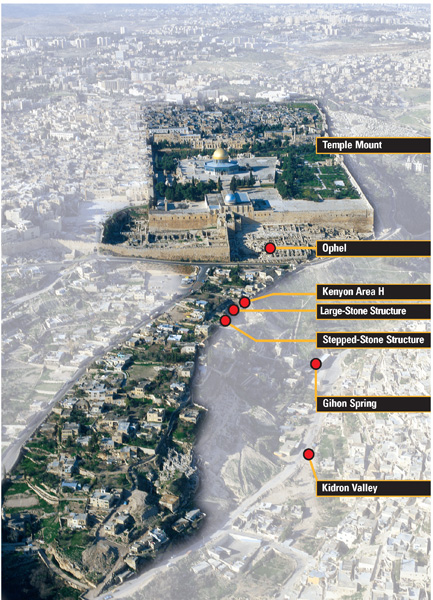Image Details

Garo Nalbandian
“David went down to the fortress” when he feared an attack by the Philistines, according to 2 Samuel 5:17. Where did he go down from? This photo helps provide the answer. It is taken looking north, facing the spur known as the City of David, the oldest settled portion of Jerusalem; beyond it is the Temple Mount, where David’s son Solomon built the Temple. Marked on the photo are Area H, where Kathleen Kenyon found parts of what Mazar has now identified as a large public structure; to the south of it is the massive Stepped-Stone Structure, a portion of hillside blanketed with large blocks that must have supported a major building on the slope above it; the Gihon Spring, ancient Jerusalem’s only source of fresh water; and the Kidron Valley, east of the city. Author Eilat Mazar suggests that the Stepped-Stone Structure was part of the same complex as David’s palace. Her suggestion may seem odd at first—why would David have built his royal residence beyond Jerusalem’s fortified walls? Because there was no room within the small walled city, Mazar answers. The palace required no protection in normal times; when a threat loomed, David and his entourage could quickly “go down,” as the Bible says, to the city’s fortress a few feet to the south.
